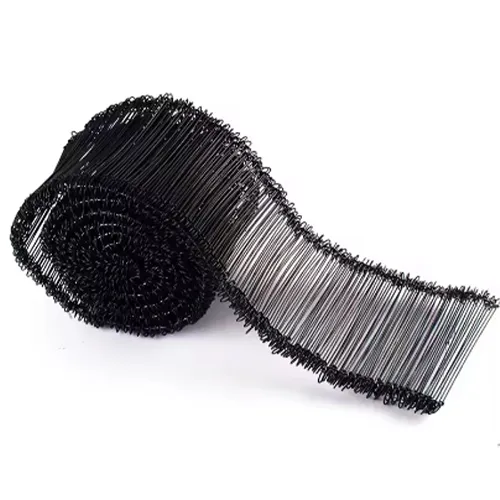-
 Phone:
Phone: -
 Email:
Email:

Current Trends and Insights into Barbed Wire Pricing Strategies
The Dynamics of Barbed Wire Prices An In-Depth Analysis
Barbed wire, a crucial component in fencing and security applications, has seen fluctuating prices driven by a multitude of factors. Understanding the dynamics of barbed wire prices requires an examination of supply and demand, production costs, international trade, and emerging market trends.
Overview of Barbed Wire
Barbed wire consists of a series of sharp edges or points arranged at intervals along a strand of wire, making it an effective deterrent against intruders and unwanted animals. Initially invented in the 19th century, barbed wire quickly revolutionized fencing practices in agriculture as well as in military and private security applications.
Factors Influencing Barbed Wire Prices
1. Raw Material Costs The primary component of barbed wire is steel, which is subject to price fluctuations influenced by global supply chains, mining activities, and the costs of raw materials like iron ore and scrap metal. Steel prices can be affected by tariffs, trade agreements, and changes in demand from various industries, significantly impacting barbed wire costs. For instance, periods of increased construction activity often lead to higher steel prices, subsequently elevating the cost of barbed wire.
2. Production Costs The process of manufacturing barbed wire involves additional expenses, including labor, energy, and machinery maintenance. Rising energy costs can have a direct effect on production expenses, which, in turn, can reflect in retail prices. Moreover, manufacturers continually seek efficiency improvements, which can stabilize or reduce prices in the long run, depending on technological advancements.
3. Demand Trends The demand for barbed wire occurs in various sectors including agriculture, construction, and security. An increase in agricultural land use or urban expansion can elevate the necessity for fencing, influencing prices. Various regional markets may experience spikes in demand due to specific projects, such as government initiatives, creating temporary price surges.
4. Geopolitical Factors Political stability and international relations significantly impact trade and pricing. Countries that rely heavily on imports for their steel products, including barbed wire, may face price increases during trade tensions or geopolitical crises. For instance, tariffs imposed on steel imports from specific countries can lead to a rapid increase in local barbed wire prices as domestic manufacturers adjust to increased raw material costs.
barbed wire price

5. Economic Indicators Broader economic conditions, including inflation rates, employment figures, and capital expenditure in various sectors, can shape demand for barbed wire. During economic downturns, construction and agricultural investments often decline, potentially lowering prices. Conversely, in times of economic growth, increased spending can lead to higher prices due to rising demand.
Market Dynamics and Price Trends
Recent years have shown that barbed wire prices vary significantly across different regions and market conditions. For example, in regions prone to crime, such as urban areas, the demand for security fencing using barbed wire has surged, leading to higher prices. In contrast, rural areas often see less volatility in pricing driven by steady agricultural demand.
E-commerce has also reshaped the barbed wire market, allowing retailers to compete on price while offering a wider variety of products. Online platforms facilitate consumer access to barbed wire from manufacturers across the globe, potentially driving prices down through increased competition.
Future Outlook
The future pricing of barbed wire is uncertain but likely influenced by ongoing trends in sustainability and alternative fencing technologies. As consumer preferences shift toward eco-friendlier solutions, manufacturers may explore biodegradable or less harmful materials, potentially affecting production costs.
On the international front, ongoing shifts in trade policies and geopolitical landscapes will continue to shape prices. Manufacturers and retailers must remain agile to adapt to these fluctuations while meeting consumer needs.
Conclusion
The price of barbed wire is affected by a complex interplay of raw material costs, production expenses, demand fluctuations, geopolitical variables, and broader economic conditions. Understanding these factors can help stakeholders—ranging from manufacturers to consumers—make informed decisions. As market dynamics evolve, keeping abreast of trends and changes in the industry will be crucial for anyone involved in the barbed wire sector.
-
Wire Mesh for Every Need: A Practical SolutionNewsJul.25,2025
-
Steel Fences: Durable, Secure, and Stylish OptionsNewsJul.25,2025
-
Roll Top Fencing: A Smart Solution for Safety and SecurityNewsJul.25,2025
-
Cattle Farm Fencing Solutions for Maximum SecurityNewsJul.25,2025
-
Affordable Iron Binding Wire SolutionsNewsJul.25,2025
-
Affordable Galvanized Wire SolutionsNewsJul.25,2025
-
Wire Hanger Recycling IdeasNewsJul.25,2025








